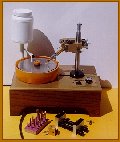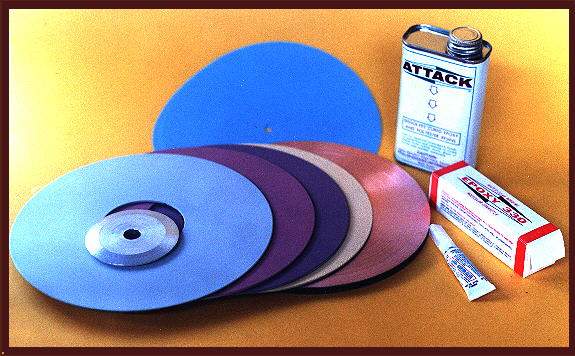Emphasis is by Me
Robert Morley Columnist Gold Price Warning Signs January 22, 2008 | From
theTrumpet.com Robert Morley When gold goes up, trouble is on the
way. With gold setting new price records
on a weekly and daily basis, maybe it is time to listen to what that “barbarous
relic” (as Ben Bernanke might say) is telling us. Since America closed the gold window
in 1971 and abandoned the Bretton Woods agreement, the U.S. dollar has not been
convertible to gold. The dollar became
fiat and backed by nothing tangible: meaning that it only has purchasing
power because of government legislation and because America’s trade partners
(who have fiat currencies of their own) are willing to accept it in exchange. But old habits die hard. People have
been using gold as money for thousands of years—fiat paper money for less than
40. To build confidence in the newly
created fiat currencies, central banks around the world jacked up interest
rates to reward savers of paper money, while simultaneously executing concerted
and coordinated gold sales to keep the price of gold down. Eventually the plan
worked and by the early 1980s, fiat money became the public norm, and gold
became little more than an antiquated commodity, valued only as pretty jewelry,
or by fanatical gold-bugs—or so many thought. Just last week, that metal of kings
was selling for more than $900 per ounce—a new all-time high. With all the effort central banks
have made promoting paper money and discrediting gold, does this new high carry
some sort of warning? Gold is like the canary in a coal
mine. In case you are unfamiliar, during the early 1900s, coal miners would
carry these birds with them down into the mine. If the bird quit singing, or
worse, dropped dead, the miners knew that the air was bad and it was time to
get out. Gold is an economic canary. Historically, when
the price of gold goes up, it is an indicator of probable economic trouble. “The modern mind dislikes gold,” noted
economist Joseph Shumpteter, “because it blurts out unpleasant truths.”
Gold is an indicator of economic instability. Back in 2002, just after gold had
hit rock bottom and was being termed an irrelevant barbarous relic by many
media outlets, Ron Fraser, writing for the Philadelphia Trumpet,
asked: “Is gold on the comeback track? Traditionally, gold is seen as a hedge
against economic hard times. Though it has shown no real sparkle for the past
couple of decades, the slide of the dollar and tough times on Wall Street have
brightened the immediate future of gold. In fact … some pundits [predict] that,
as economic reality dawns in the collective mind of the public, gold prices
might head out of orbit.” Is economic reality finally
beginning to sink in? Is it coincidence that gold is again
spiking just as some of America’s largest and most prestigious financial
institutions are experiencing their worst losses ever, when a collapsing
housing market threatens to help tip the economy into recession, when oil has
soared to $100 per barrel, when consumer spending looks like it might be about
to fall off a cliff, and when the stock market is convulsing with uncontrolled
hiccups? All-time-high gold values and
economic turmoil have gone hand in hand before—as, for example, during the late
1970s and early 1980s. Something else that goes hand in
hand with rising gold prices is a falling dollar, such as we see today. Gold is also an early indicator of future
dollar weakness. Gold is internationally priced in dollars.
Therefore, when the U.S. dollar falls in value, the price of gold, in dollar
terms, rises. However, since markets are generally forward looking, the price
of gold often rises even before the dollar falls—giving gold its predictive
power. The price of gold works this way
because when investors anticipate dollar weakness they dump their dollars for
other currencies and precious metals. For this reason gold has been termed the
“anti-dollar” by some. The more gold rises, the more dollar weakness is likely
on the way. Gold is also an indicator of inflation. One of the primary factors behind
dollar weakness is over-printing. History is littered with the wrecks of paper
money adventures. In hundreds of cases, in all lands, at all times, the story
has been the same: loss of confidence in and eroding value of fiat currencies.
Paper money does not work; the temptation of the printing press is too great.
Emperors, kings, presidents, prime ministers and central bankers have not been
able to resist the temptation: When faced with economic problems or
overspending, they have all chosen to create the money needed to pay bills or
fight wars. It is no different in America today. Look at a chart of money-supply
growth and it is evident why the price of gold is going up: The printing
presses are in overdrive. According to John Williams of Shadow Government Statistics, M3 (the
broadest measure of U.S. money supply) is increasing at an astounding 15
percent annual pace. Williams says that is a rate not seen since President
Nixon closed the gold window in 1971. As more dollars are created, each
existing dollar becomes worth less—thus (all things being equal) it requires
more dollars to purchase the same amount of gold or consumer products. The U.S. dollar and the British
pound, two of the world’s most successful fiat currencies, have lost more than
95 percent of their purchasing power over the last 100 years. Consider: It took from 1620 until
1974 to create the first $1 trillion in America—that’s more than 350 years.
Think of all the railroads, canals, freeways, ports, factories and cities that
were built during that time. Two world wars and the Korean War were also fought
during this time. Contrast: Today, the last trillion took around 10 months to create—what did
we get for that trillion? But America and Britain are not
alone—the global money supply is expanding at a rate unprecedented in all
history. As measured by M3 or its nearest
measure, the money supply expanded by approximately 16 percent in Australia, 13
percent in Canada, 17 percent in China (M2), 12 percent in the eurozone, 44
percent in Russia (M2), 12 percent in the UK, and 22 percent in Saudi Arabia during 2007. No wonder gold is rising against all currencies. Lastly, gold is also an indicator of
confidence in the world’s financial system. All currencies are falling in
value—some are just falling faster than others. In today’s backward world,
nations race to competitively devalue their currencies so as to gain advantages
in trade. A weaker currency means exports become cheaper than the foreign
competition. More exports mean more jobs, and more jobs mean a better
economy—or so the theory goes. The facts that the wages workers earn are
continually worth less, that prices continually rise, and that the purchasing
power of any bank account is eroded—are ones that central bankers and
politicians hope will go unnoticed. But the collective memory of
thousands of years of paper money adventures does not disappear in just 40
years. Weimer Germany; France’s currency crises in the early and late 1700s;
more recently, the Argentina peso crisis and Zimbabwe’s 15,000 percent
inflation come to mind. The list of failed currencies goes on and on, and in
each case it was the average person who, caught unaware, saw his standard of
living fall the most when the currency came crashing down. “Gold’s newfound strength is a sign
that the world’s misplaced confidence in central bankers, and their alleged
commitment to limiting the issuance of currency, is finally coming to a long
overdue end,” wrote Peter Schiff in 2005. The days of ignoring economic
reality may also be coming to an overdue end. Gold is just one indicator among many flashing warning signs. A global financial
crisis is on the way. • Robert Morley’s column appears every Tuesday.
|

![[Most Recent Quotes from www.kitco.com]](http://www.kitconet.com/images/quotes_7a.gif)




